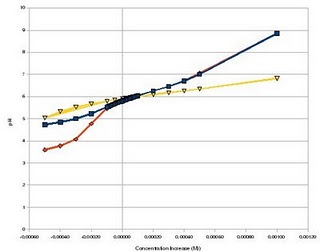What are Hydroponic nutrients ? The nature of nutrient salts
For example, the fact that a hydroponic solution contains 100 ppm of Nitrogen, does not mean that the solution contains nitrogen as elemental nitrogen, that is, N2 gas. This in fact, does not express the form in which nitrogen is present, it may be present either in the form of NO3(-), NH4(+) or other molecules. This has caused some confusion since some people are unaware that hydroponic nutrients are mainly inorganic salts that, when dissolved in water, form ionic substances which are the actual nutrient assimilated by the plant.
It is important then to have a clear mental perspective about the way in which things are expressed and the way in which they really are. For example, you can have a hydroponic solution with 100 ppm of P. That is, a hundred milligrams of phosphorous present per liter of solution but in no way does this express the way in which phosphorous is present within the solution. Phosphorous may actually be located as a large assortment of ions, either H2PO4(-), HPO4(2-) or PO4(3-).
The reason why nutrient solution concentrations are often expressed as mere element concentrations instead of actual available form concentrations is because it is much simpler to think about the sum of all the available forms of a nutrient than each nutrient form by itself. In the light of the previous example, it is much easier to say 100 ppm of P than to state a specific concentration of each ion, given that (in this case) all ions are indistinguishable for the plant.
The really important thing about this is that the grower should have a clear understanding of the nature of hydroponic nutrients. Nutrients are really ions, which are formed by the dissolution of salts in water. So when you go out to buy nutrients for your hydroponic solution you should look out for inorganic salts of the desired elements ! (below, an image that graphically shows ion dissolution)
–





